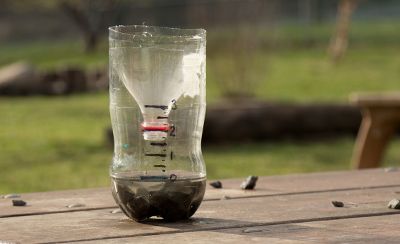Introducing the Science Behind Rainfall Gauges: Exactly How These Instruments Play a Vital Duty in Climate Research Study and Ecological Surveillance
Rain gauges, seemingly simple devices, hold a profound significance in the world of environment study and environmental monitoring. As we peel off back the layers of this scientific veil surrounding rain assesses, we uncover a globe where precision, data accuracy, and careful monitoring assemble to unveil a deeper understanding of our changing environment and its effect on the world.
Value of Rain Gauges
Rainfall gauges play a crucial function in monitoring and gauging precipitation levels, giving essential information for climate study and evaluation. These devices are fundamental in evaluating the amount of rains that happens in a particular area over a particular duration. By determining and collecting rainwater, rainfall determines offer valuable understandings into the circulation and intensity of rainfall, assisting meteorologists, hydrologists, and climatologists in comprehending climate patterns and patterns.
One of the crucial reasons that rainfall assesses are critical is their ability to provide precise and localized information. Unlike satellite or radar-based measurements, which provide wider monitorings, rain gauges deal exact information certain to the area where they are positioned. This localized data is essential for different applications, consisting of flood forecasting, dry spell tracking, and water resource administration. In addition, long-lasting data accumulated from rain evaluates assists in examining climate adjustment effects and patterns, adding significantly to scientific research study and decision-making processes. Basically, rain evaluates offer as necessary tools in the area of meteorology and ecological scientific research, playing an essential function in progressing our understanding of weather condition and climate dynamics.
Kinds Of Rain Gauges

Capability and Procedure
In the world of environment research and atmospheric research studies, the performance of rain assesses lies in their elaborate capability and accurate operational systems. Rainfall determines are created to precisely determine the quantity of rainfall that falls over a particular location throughout a set period.
The performance of rainfall gauges is based upon the principle of gathering and measuring rainwater in a standard manner. This gathered data is important for understanding regional weather patterns, tracking long-lasting environment trends, and examining ecological impacts. To make sure exact measurements, rain assesses demand to be strategically put in open locations away from obstructions such as structures or trees that can hinder the collection process.
The operational element of rainfall gauges involves routine maintenance to protect against particles accumulation, calibration checks to maintain measurement accuracy, and data taping for evaluation (rain gauge). Overall, the functionality and operation of rain evaluates are necessary for collecting reliable precipitation data important to climate research and environmental monitoring
Role in Climate Research
Given the crucial significance of precise precipitation measurements in understanding weather patterns and environmental impacts, the function of rainfall gauges in climate study is vital. Rainfall evaluates offer crucial data for climate research by quantifying the quantity of rainfall that tips over a certain area during an offered duration. This data is important for keeping an eye on long-lasting trends in rainfall patterns, analyzing the effect of climate change on rains distribution, my website and improving climate designs.

Climate scientists make use of data collected from rain gauges to examine variations in rainfall levels, determine local climate fads, and assess the performance of water resource monitoring techniques. By contrasting historical precipitation information with current dimensions, researchers can discover changes in precipitation patterns, such as modifications in the regularity or intensity of rainfall occasions. This information is important for recognizing how environment adjustment is influencing precipitation characteristics and can help policymakers make notified choices regarding adaptation and reduction approaches.
Applications in Environmental Tracking

In flood forecasting, rainfall scale data helps to track rainfall intensity and circulation, permitting authorities to provide timely warnings and take necessary steps to reduce flood threats (rain gauge). Drought surveillance relies upon rain scale data to assess dampness levels in the soil and track precipitation deficiencies, helping in the identification of drought-prone locations and the implementation of dry spell reaction strategies
Furthermore, rainfall scale data plays an essential function in water resource administration by providing info on water availability and use fads. This data is made use of to make Read Full Article educated choices pertaining to water allocation, preservation steps, and lasting water resource preparation. Additionally, in farming, rainfall gauge information helps farmers in optimizing irrigation timetables, crop option, and overall ranch monitoring methods based upon local rainfall patterns. Overall, rainfall evaluates are essential devices in environmental monitoring, supplying important understandings that add to educated decision-making and sustainable resource monitoring.
Final Thought
In final thought, rainfall evaluates are necessary tools for gauging rainfall, supplying important information for climate research and environmental tracking. With various types and capabilities, rain determines play a critical role in understanding precipitation patterns and their influence on the setting. By precisely gauging rainfall, these tools contribute to the development of scientific knowledge and aid in making notified choices pertaining to water resource monitoring and catastrophe preparedness.
Rain gauges play an important duty in tracking and gauging rainfall levels, providing crucial data for environment research and evaluation. The conventional rain Find Out More scale, known as the "tipping pail" scale, is one of the most generally utilized tools. Ultrasonic rainfall assesses usage sound waves to identify the presence of rainfall, offering real-time information on precipitation levels.Environment scientists make use of data accumulated from rain assesses to evaluate variants in precipitation degrees, identify local climate fads, and assess the effectiveness of water resource monitoring methods.In conclusion, rain assesses are crucial tools for measuring precipitation, giving valuable information for climate research and environmental tracking.
Comments on “Rain Gauge Acquiring Overview: What You Required to Know for Ideal Efficiency”